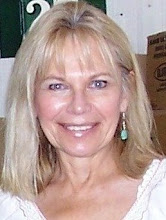Note: My translation, edited by Fred Hoffman, was first published in the Fall/Winter 1999 issue (Vol. 1, No. 2) of Proteviai, the journal of the Lithuanian Global Genealogical Society. The town of Ejszyszki is now known as Eisiskes, Lithuania.
A government-owned town in Lida powiat [county], 1 km. from the river Wersoka, a tributary of the Mereczanka. It lies at 54 degrees 11 minutes north latitude, 25 degrees 00 minutes east longitude, 35 km. northwest of Lida and 80 km. fromWilno [now Vilnius, Lithuania], with 2,616 inhabitants, mostly Jews, and 300 houses.
Within the town are the office of the 2nd (state) police district, with one police precinct; the 3rd court of peace of the 2nd district (Lida);the administration offices of the gmina [rural administrative district]; a rural school; a post office, which handles correspondence of all sorts; and a Catholic parish church built of brick, a half km. from town. In the year 1866, the town had 135 houses and 715 inhabitants, of whom 610 were Jews, 89 were Catholics, and 16 were Orthodox; it also had 4 breweries, 2 tanneries, and a water mill.
Ejszyszki is famous for its Thursday country markets and its 4-day fairs, held twice a year. One is held on the feast of the Ascension; the people call it szosniak ["6th one"] because it comes during the 6th week after Easter. The other is held on the feast of Corpus Christi, and is called dziewietnikiem ["9th one"] because it takes place during the 9th week. The main objects traded in the country markets and fairs are pigs and horses.
If one can rely on official accounts, in 1877, at both fairs, 13,947 rubles’ worth of merchandise was sold, and the total brought in was 22,395 rubles. Besides the Jews, who control the town’s commerce and pubs, the numerous gentry who live in the vicinity, in settlements restricted to the nobility, also enjoy prosperity, due to the above-mentioned trade in hogs and, to some extent, horses.
The gmina of Ejszyszki is divided in to 6 rural precincts, consisting of 87 villages totaling 453 hearths [houses] and 5,533 peasants. The class-two Catholic church, which is in Radun deanery, has a chapel in Podzitwa (formerly also one in Kolesniki [now Kalesninkia, Lithuania] and 10,460 faithful.
Regarding the founding of Ejszyszki, there are legends in the Lithuanian chronicles. In the year 1065, the Lithuanian prince Erdziwil, with three subordinate commanders, invaded Lithuanian territories that had been conquered by Kievan Rus. Once he had liberated them from subjugation by their neighbors and from the tribute they paid to Jaroslaw, he divided them between his comrades in the expedition.
Of them, Ejsa, or Eiksis or also Ejszius, a Samogitian by birth, founded the grodek of Ejszyszki on the land he received. Ejszyszki was the dwelling-place of the first Jews (Karaites) to come from Russia to Lithuania in the year 1171. Attesting to this is a gravestone that still could be seen in this town as of 1798.
In the second half of the 14th century, the bojar [nobleman] Sudymund owned Ejszyszki. In Krolewiec [aka Konigsberg, Kaliningrad], he, along with other Lithuanian lords, confirmed a bequest of Prince Witold [Vytautus] dated January 30, 1384, ceding all his inheritance to the Teutonic Knights in exchange for reinforcements of people and arms against Jagiello [Jogaila]. This was the cause for which the latter dispossessed Sudymund of Ejszyszki, which became a starostwo after the creation of Wilno province in 1413, and was the chief grod [fortified settlement] of the county and ciwunstwo [bailiff's jurisdiction] of that name.
Ejszyszki lies on what was once the most frequented highway from Wilno to Krakow, which today bears the name “the Radun highway.” A half km. from the town, on land of the manorial farmstead of Hornostaiszki, is a tract of land, covering about 2 desyatinas [hectares], surrounded by a large rampart and ditch called Horodyszcze in ancient local documents. There was an optical telegraph station located within these trenches some 20 years ago; today the office of the justice of the peace is there.
The Catholic parish church in Ejszyszki was founded by the Grand Prince Witold, and was named Cialo Boze [Corpus Christi, Body of Christ]. In 1506 King Aleksandr gave it an endowment, and in 1522 Zygmunt I increased its funding. In 1852 it was finally lined with brick and named Ascension of Our Lord through the endeavors of Prince Kalinowski.
In 1781 the starostwo of Ejszyszki district was in the possession of the Sollohubs; in 1738 there were 56 taxable hearths, paying a kwarta of 2,470 Polish zloty; in 1797 the kwarta came to 2,000 zloty.
Subscribe to:
Post Comments (Atom)










No comments:
Post a Comment